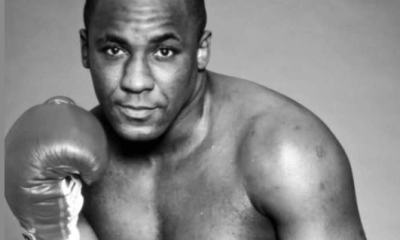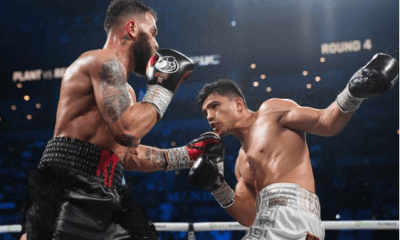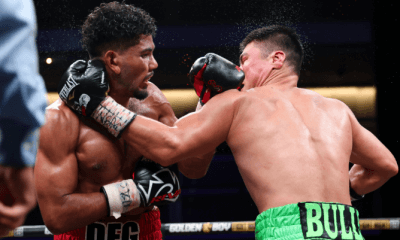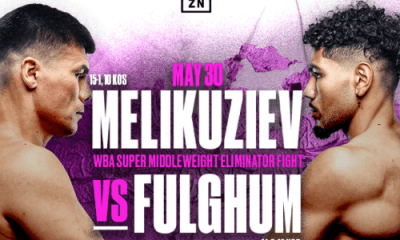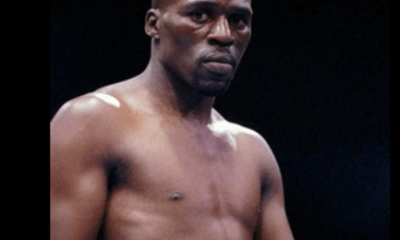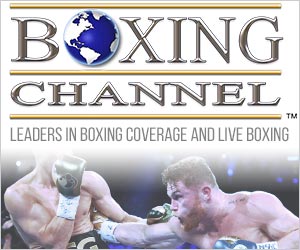Featured Articles
Tales from L.A.
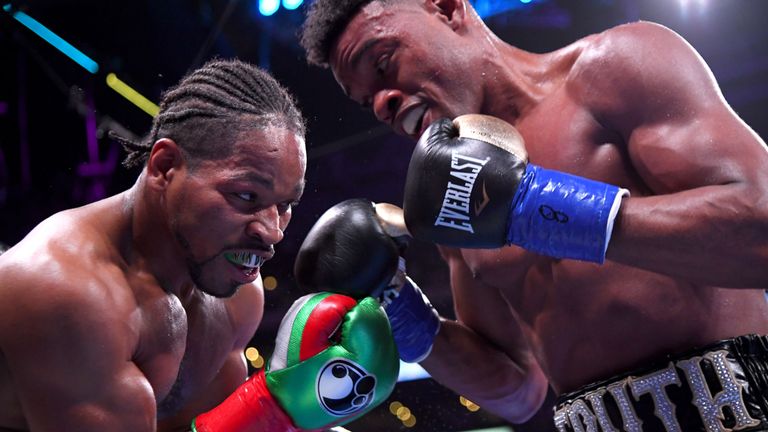
Tales from L.A.
One of the best welterweight title clashes in recent years took place as Errol Spence Jr. connected with a single sidewinder left cross to Shawn Porter’s chin and put him down. It proved to be the difference in their back and forth tussle at Staples Center.
It also climaxed a long week of media luncheons, workouts and photographic opportunities that spearheaded the PBC on Fox fight card last week in the city of Los Angeles.
That was only part of the story.
Because of the magnitude of the championship card that also featured super welterweights David Benavidez, Anthony Dirrell, Mario Barrios, Josesito Lopez and John Molina, a horde of boxing writers, photographers and videographers ascended to the second largest city in the U.S. from all parts of the world.
Wednesday’s Recon
Big fight cards similar to last week’s action bring the best of the best in reporting in the boxing world. Reporters descended from far away countries like Great Britain, Japan, Mexico and other nations to watch the heavy-duty boxing lineup that featured mostly 50-50 fights.
The media center was located in the Inter-Continental Hotel on Figueroa Street in downtown L.A. It’s about five city blocks from the Staples Center and accessible by subway if you have a hotel in Hollywood, Long Beach, East L.A. or Pasadena. The media hotel had a rooftop bar 70 stories up that allows you one of the most impressive views of the surrounding areas including a spectacular view of the Pacific Ocean.
First to greet me at the media hotel was Tim Smith a former ace reporter for the New York Daily News who now heads the Premier Boxing Champions communications team. Few know the boxing game as well as the former New Yorker.
“O.G.!” shouted Smith when I entered the room filled with other reporters.
It takes an OG to recognize an OG.
Smith knows everybody in the boxing world and if you don’t know who Smith is, well, you better ask somebody.
Inside one of the banquet rooms several of the featured fighters gathered inside to meet the press. In a very informal setting people with video cameras, microphones and cell phones surrounded each of the boxers in the room depending on their importance.
Anthony Dirrell was surrounded by 30 or more reporters as I entered the room that measured about the size of a Major League Baseball infield. He talked about defending the WBC super middleweight title and other boxing aspects.
Dirrell has been boxing for many more years than most of the other participants with the exception of Josesito Lopez and Robert “The Ghost” Guerrero who began several years earlier.
It brought back fond memories to see these three members of the old guard.
Club Show Days
One major flaw with many of the top boxing reporters has always been their refusal to watch club shows from the smaller boxing promotion outfits. Southern California has a number of promotion companies that put on club shows every month.
These small club shows are where you can first discover the future gems of tomorrow.
Most of the top boxing writers come from newspapers or major magazines that only focus on major boxing stars that appear on televised cards. By the time they see the fighters many of them have been written about for years by those covering the club fight scene.
Discovering fighters at the beginning of their journeys in four-round fights provides invaluable background and insight. If a writer covers boxers at the beginning of their journeys, there are no surprises when they reach the championship level.
The gems stand out. But sometimes the hidden gems need a little dusting off to reach the top.
Anthony Dirrell was one of those who seemed to get lost in the shadow of his brother Andre Dirrell. But the Flint, Michigan native always had that extra toughness you needed to withstand the pain that made others quit.
The first time I got a glimpse of both Dirrells was on a boxing card at Pechanga Resort and Casino in Temecula, Calif. back in 2006. It was a Goossen-Tutor Card and that night Anthony Dirrell waxed somebody in one round.
Four months later I saw Dirrell again at the Staples Center when fellow Michigan fighter James “Lights Out” Toney fought Samuel Peter in a heavyweight fight. Robert “The Ghost” Guerrero fought that same night and won the IBF featherweight world title. After that fight card we ran into Guerrero at The Pantry which was the only downtown restaurant that was open after 11 p.m. in L.A. back in 2006.
Guerrero was another one of those boxers that I saw in his pro debut back in April 2001. I remember it vividly because in the co-main event Hector Camacho Jr. arrived sitting atop a large snorting camel at Fantasy Springs Casino. Some things you never forget. Though Camacho never achieved the greatness most predicted for him, Guerrero achieved status as one of the best pound for pound fighters when he met Floyd Mayweather in the boxing ring in 2013.
Josesito Lopez is another who I personally saw in the boxing ring as a youngster even before he became a professional. The Riverside-based fighter always showed grit and super human determination. It’s amazing to watch athletes like Lopez rise from amateur to star status where they are part of a pay-per-view card that also attracted more than 16,000 fans to the Staples Center.
Watching Dirrell, Lopez and Guerrero rise through the ranks of the professional fight world from beginning to end gives a reporter an overall perspective that can’t be taught.
The main event fighters Spence and Porter were another two whose rise to the top were different. Spence was part of Team USA in 2012 and was picked up by Al Haymon as a professional. I saw his first three pro fights including his debut at Fantasy Springs Casino in November 2012 that featured Gary Russell Jr. in the main event. Most of the fighters on the Golden Boy Promotions fight card that night were signed by Haymon, but not all would remain.
Porter differed from Spence. He fought his way out of the Midwest boxing cards and the first time I saw him fight was against former two-time lightweight world champion Julio Diaz at the LA Memorial Sports Arena in 2012. Diaz proved too crafty for Porter and though the fight ended in a draw it easily could have been a loss for the Ohioan. Their rematch proved different and showed that Porter could adapt and evolve as he dominated Diaz at the Hard Rock Hotel in Las Vegas the next year.
Caplan
After the sizzling PBC fight card at Staples Center I ventured over to the Palm Restaurant located on Flower Avenue, a block east of the Staples Center. I was invited personally by super publicist Bill Caplan for a dinner party by the WBC.
I met Mr. Caplan around 1993 when he was the top publicist for Top Rank and they were promoting a slew of prospects including Oscar De La Hoya. Well, Oscar wasn’t just a prospect but a former Olympic gold medalist who a year earlier emerged victorious in Barcelona, Spain.
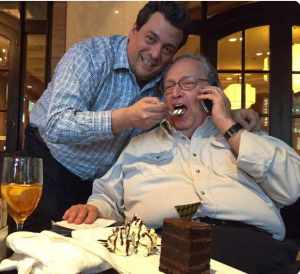
Few know the boxing world as well as Mr. Caplan (pictured hamming it up with WBC President Mauricio Sulaiman). He’s been involved in the boxing world as a publicist since the 1960s and worked with Aileen Eaton, Don Chargin, Don King, Bob Arum and now De La Hoya’s Golden Boy Promotions.
“I was with Don King when he first started his promotion company,” said Caplan about the rise of King, one of the most recognizable figures in the boxing world.
Caplan also works for the World Boxing Council that coordinates the rankings and rules for world championship fights around the world. Right now the Mexico City-based organization has established VADA drug testing for all championship fights including women.
Sitting and talking with Caplan about boxing in the past and present has always been one of the treasured moments for me. Who else can talk about meeting with the original “Golden Boy” Art Aragon or his buddy Bennie Georgino a former boxing manager and promoter?
One man we shared tales about was the late Luis Magana who would have been right in the thick of the conversation with his own tales. The dapper gentleman from Mexico was a predecessor of Caplan and served as the Spanish publicist for the Olympic Auditorium during his days from the 1930s until the 1980s. He passed away 11 years ago in his mid-90s.
Caplan has been part of some incredible moments too. During his time, he’s watched the boxing masses get their results from magazines, newspapers, radio to television and now through internet streaming spanning more than 60 years. He’s a treasure and one of the kindest gentlemen in the hardscrabble world of pro boxing.
Moments like these with Caplan and others are part of the boxing that make you realize that it’s a very unique world. No other sport has a history as rich as prizefighting with the exception of Major League Baseball. Other sports are relatively new when compared to professional boxing that can be traced back hundreds of years.
Prizefighting has a lengthy history with unique personalities like Bill Caplan who keep the lineage of the sport enriched and thriving.
Last Saturday night, we spoke about several other moments in boxing but those are tales for another day.
Check out more boxing news on video at The Boxing Channel
To comment on this story in The Fight Forum CLICK HERE
-
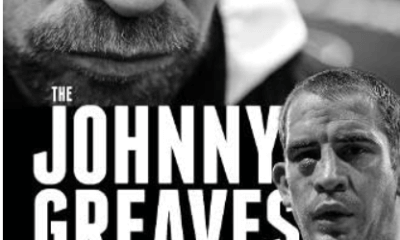
 Featured Articles3 weeks ago
Featured Articles3 weeks agoThomas Hauser’s Literary Notes: Johnny Greaves Tells a Sad Tale
-
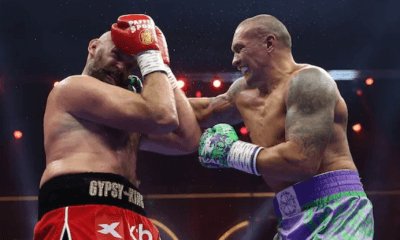
 Featured Articles2 weeks ago
Featured Articles2 weeks agoBoxing Notes and Nuggets from Thomas Hauser
-
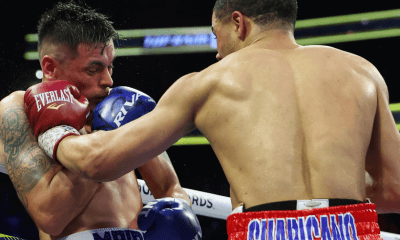
 Featured Articles4 weeks ago
Featured Articles4 weeks agoUndercard Results and Recaps from the Inoue-Cardenas Show in Las Vegas
-
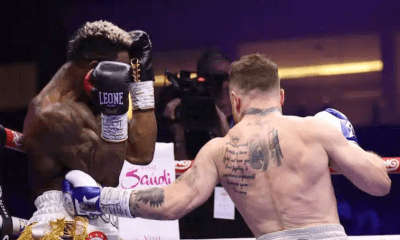
 Featured Articles4 weeks ago
Featured Articles4 weeks agoCanelo Alvarez Upends Dancing Machine William Scull in Saudi Arabia
-
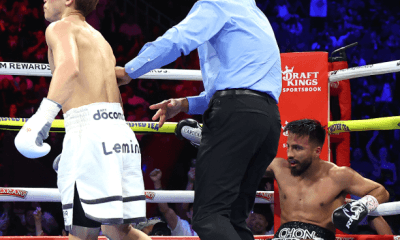
 Featured Articles4 weeks ago
Featured Articles4 weeks agoBombs Away in Las Vegas where Inoue and Espinoza Scored Smashing Triumphs
-
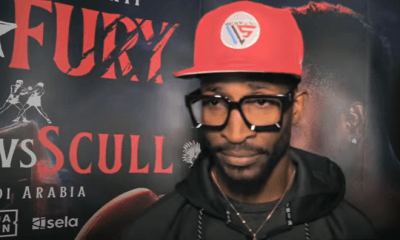
 Featured Articles4 weeks ago
Featured Articles4 weeks agoArne’s Almanac: The Good, the Bad, and the (Mostly) Ugly; a Weekend Boxing Recap and More
-
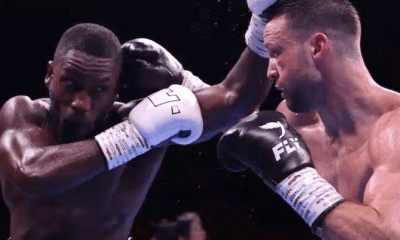
 Featured Articles1 week ago
Featured Articles1 week agoEkow Essuman Upsets Josh Taylor and Moses Itauma Blasts Out Mike Balogun in Glasgow
-
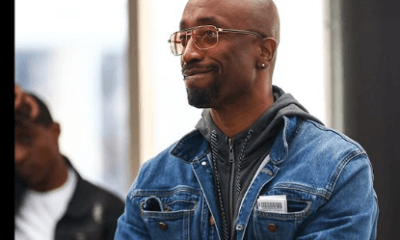
 Featured Articles4 weeks ago
Featured Articles4 weeks ago“Breadman” Edwards: An Unlikely Boxing Coach with a Panoramic View of the Sport

